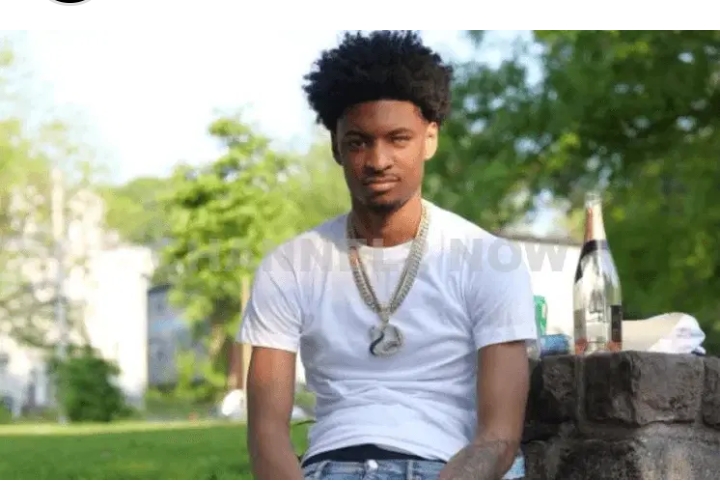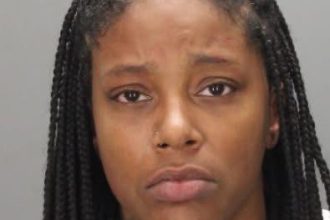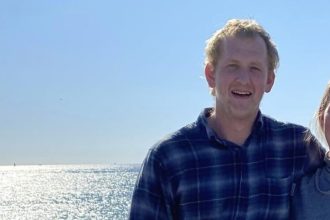Juan Rodriguez Fatally Shot on Syracuse’s East Side: 22-Year-Old Man Killed During Surge in Citywide Gun Violence as Police Investigate Four Shootings in One Day
SYRACUSE, NY — The city of Syracuse is once again grappling with the aftermath of gun violence following the tragic death of 22-year-old Juan J. Rodriguez. The young city resident was fatally shot on the evening of June 1, 2025, marking the most serious incident in a series of shootings that plagued the city throughout that Sunday.
Rodriguez was found by Syracuse police on the 200 block of Westmoreland Avenue, not far from the Parkside Commons apartments on the city’s East Side. He had suffered a gunshot wound and was rushed to Upstate University Hospital. Despite emergency efforts, he was later pronounced dead, leaving a community in mourning and investigators racing for answers.
A Young Life Cut Short
Juan Rodriguez was only 22 years old—young, full of potential, and by all accounts, someone who had dreams and aspirations like so many others in his community. His sudden and violent death has left his family devastated and neighbors shocked. He is now the latest victim of a troubling uptick in shootings that continue to claim lives in Syracuse at an alarming rate.
Friends and relatives describe Rodriguez as kind, respectful, and hardworking. “He didn’t deserve this,” one neighbor stated, standing near the police-taped scene the following morning. “He was always trying to stay out of trouble, and now he’s gone.”
As news of the fatal shooting spread across social media and local neighborhoods, the community has responded with grief and outrage. Calls for justice and safety are once again being made loud and clear to city officials.
A Day of Chaos: Four Shootings Rock Syracuse
While Rodriguez’s death stands as the most tragic of the day’s events, his killing was just one of four separate shootings that unfolded across the city on June 1.
- 3:45 a.m. — Police discovered a man in his 30s with a gunshot wound to the leg near Erie Boulevard West and Geddes Street. Details remain limited, and the location of the shooting itself is still under investigation.
- 1:00 p.m. — A 20-year-old man was shot in the back in the 600 block of Onondaga Avenue near Lower Onondaga Park. He was hospitalized and is expected to survive.
- 5:45 p.m. — An 18-year-old male suffered a gunshot wound to the lower back on the 500 block of Park Street. He was also hospitalized with non-life-threatening injuries.
- 6:10 p.m. — Juan Rodriguez was found critically injured on Westmoreland Avenue and later died at the hospital.
This alarming sequence of violence occurred in a span of just over 14 hours, spanning multiple neighborhoods and age groups. It has raised serious concerns about public safety, policing resources, and the increasing boldness of armed individuals in Syracuse.
Investigators Seek Public’s Help
As of now, the Syracuse Police Department has not linked the shootings to one another, nor have they announced any suspects or arrests. Spokesperson Kieran Coffey confirmed that detectives are actively pursuing leads, but few details have been made public due to the early stages of the investigation.
Authorities are asking anyone with information—whether direct knowledge, video surveillance, or anonymous tips—to come forward. Tipsters can contact the Syracuse Police Department directly or report anonymously through Crime Stoppers, a system designed to protect the identity of those providing crucial leads.
Police Chief Joseph Cecile released a brief statement acknowledging the violence: “We are working around the clock to find those responsible. These shootings are unacceptable, and we need the community’s cooperation to put an end to this pattern of senseless violence.”
Violence in Syracuse: A Deepening Crisis
The spate of gun violence in Syracuse is not isolated. The city has seen a sharp increase in shootings over the past three years, mirroring a troubling trend in mid-sized American cities. While national attention often focuses on major metropolitan areas, cities like Syracuse are witnessing deadly street violence on an increasingly regular basis.
According to Syracuse Police Department data, shootings have risen significantly since 2021, with many involving victims under the age of 25. Experts point to a mixture of factors fueling the crisis: systemic poverty, lack of community resources, high unemployment, and the proliferation of illegal firearms.
In recent months, community activists have called for increased investment in violence prevention programs, improved policing practices, and more resources for at-risk youth.
A Community Grieving, Again
Rodriguez’s death has sparked a wave of mourning across Syracuse’s East Side. Flowers, candles, and handwritten notes have been left at the site where he was gunned down. Social media tributes describe him as a “bright light” in a city plagued by darkness.
“It’s not just another statistic,” said one local pastor who ministers in the area. “This was someone’s son. Someone’s friend. And now there’s an empty chair at the dinner table that will never be filled.”
Local faith leaders and violence intervention groups are organizing vigils and outreach sessions aimed at healing the community and preventing further retaliation or unrest.
The Challenge of Preventing Gun Violence
The cycle of violence in cities like Syracuse poses a daunting challenge for law enforcement and policymakers alike. Simply increasing police presence is not enough. Experts argue that addressing the root causes—such as lack of access to mental health care, education, job training, and housing—is key to breaking the cycle.
Several local organizations, such as Street Addiction Institute, SNUG, and OGs Against Violence, have been advocating for nonviolent solutions and street-level intervention. These groups work to deescalate tensions before violence erupts and mentor young people who are vulnerable to gang recruitment or criminal activity.
But funding and political will often fall short.
City Leaders Under Pressure
Mayor Ben Walsh and other city officials have faced mounting pressure to respond to the ongoing violence. While previous efforts have included increased patrols and federal partnerships with agencies like the ATF and U.S. Marshals, critics say more needs to be done on the ground level.
“There are neighborhoods that feel forgotten,” said a community advocate. “We can’t arrest our way out of this. We need opportunity, stability, and investment—especially in our youth.”
The Syracuse Common Council is expected to hold an emergency session to discuss the recent shootings and evaluate what measures can be taken to enhance community safety.
A Tragic Pattern With No End in Sight
The murder of Juan Rodriguez fits a pattern that Syracuse residents have come to dread—another young life lost, another family broken, and another community shattered. Each incident adds to the collective trauma, eroding trust and fraying the social fabric of neighborhoods already under pressure.
For residents of Westmoreland Avenue and the East Side more broadly, fear has become part of daily life. “We shouldn’t be scared to walk down our street at 6 o’clock in the evening,” said a mother of three who lives near the shooting site.
Many residents are now calling for surveillance cameras in high-crime areas, expanded community outreach, and better collaboration between law enforcement and local organizations.
Honoring a Life, Not Just a Death
Though the police investigation continues, family members are focusing on how to preserve Rodriguez’s memory. Plans are reportedly underway for a public memorial, and community members are rallying around the family to provide emotional and financial support.
GoFundMe pages and donation drives have been established to help cover funeral expenses and support his relatives during this devastating time.
“He was a good kid,” said one family member. “He had dreams. He had goals. He was taken too soon, and we’re going to make sure his name isn’t forgotten.”
Conclusion: From Grief to Action
Juan Rodriguez’s death is a painful reminder of the toll that unchecked violence continues to take on American cities, large and small. As Syracuse reckons with the fallout from a bloody day that saw four people shot, the questions remain urgent: What is driving this wave of violence? And what will it take to stop it?
For now, the city grieves. Another family mourns. And a community holds its breath, hoping for justice, healing, and peace.




